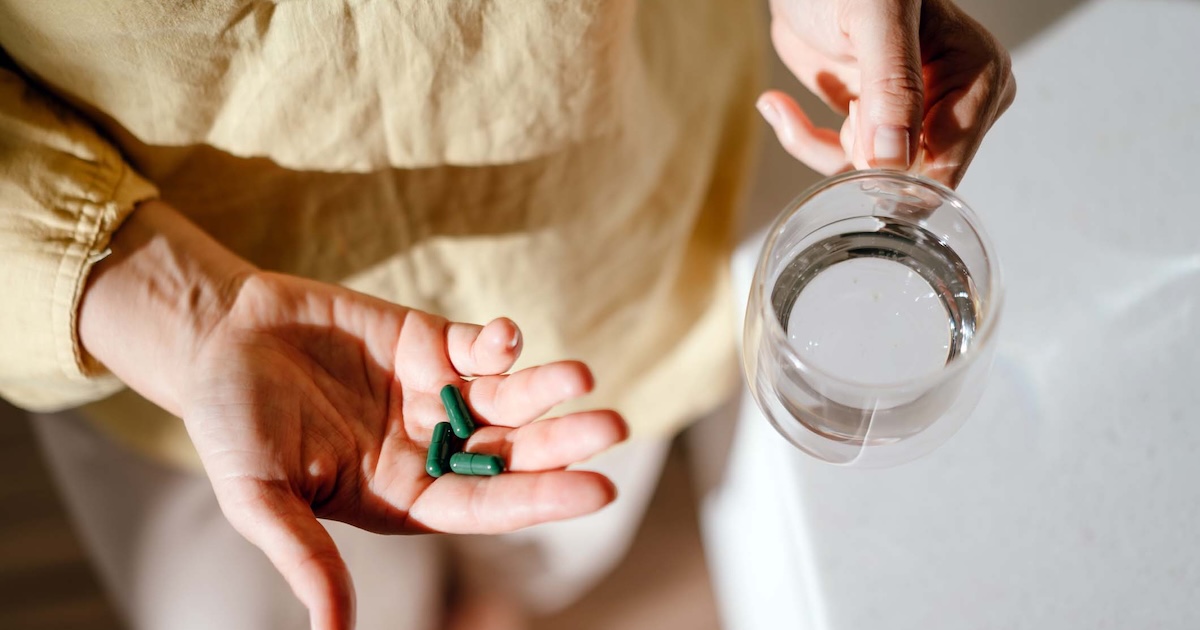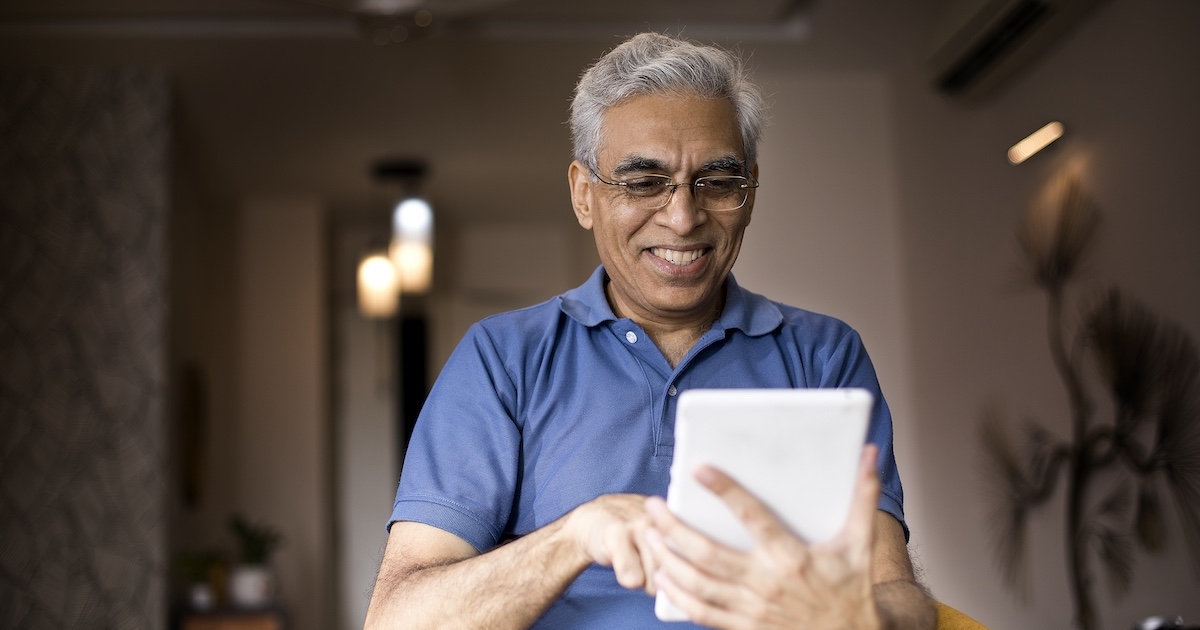 Jack Kriendler, MD, is co-founder and chairman of the board at Sentrian. A physician, physiologist and "serial entrepreneur," he has been instrumental in the design, architecture and leadership of innovative technology ventures in healthcare and the social web including Douglas Adams’ H2G2.com (acquired by the BBC) and Vielife (acquired by CIGNA). In 2007 he founded the Center for Health and Human Performance in London, dedicated to helping athletes, celebrities and "complex cases" take on extreme challenges.
Jack Kriendler, MD, is co-founder and chairman of the board at Sentrian. A physician, physiologist and "serial entrepreneur," he has been instrumental in the design, architecture and leadership of innovative technology ventures in healthcare and the social web including Douglas Adams’ H2G2.com (acquired by the BBC) and Vielife (acquired by CIGNA). In 2007 he founded the Center for Health and Human Performance in London, dedicated to helping athletes, celebrities and "complex cases" take on extreme challenges.
 Marty Kohn, MD, MS, FACEP, FACPE, is Sentrian's chief medical scientist. He is a board-certified emergency physician with more than 30 years of hospital-based practice and management experience. An alumnus of MIT, Harvard Medical School, Stanford and NYU and a Fellow of the American College of Emergency Physicians and the American College of Physician Executives, he is board certified in clinical informatics through the American Board of Preventive Medicine. Prior to joining Sentrian, he was the chief medical scientist for Care Delivery Systems in IBM Research, where he led IBM’s support for the transformation of healthcare, including development of personalized care, outcomes-based models and payment reform, including the use of the Watson supercomputer in healthcare.
Marty Kohn, MD, MS, FACEP, FACPE, is Sentrian's chief medical scientist. He is a board-certified emergency physician with more than 30 years of hospital-based practice and management experience. An alumnus of MIT, Harvard Medical School, Stanford and NYU and a Fellow of the American College of Emergency Physicians and the American College of Physician Executives, he is board certified in clinical informatics through the American Board of Preventive Medicine. Prior to joining Sentrian, he was the chief medical scientist for Care Delivery Systems in IBM Research, where he led IBM’s support for the transformation of healthcare, including development of personalized care, outcomes-based models and payment reform, including the use of the Watson supercomputer in healthcare.
Q. What's the one promise of mHealth that will drive the most adoption over the coming year?
JK: The promise that “my doctors will listen to it.” If we can help medicine as an industry understand the individual, then I think that will catalyze huge change. There are two aspects to mHealth adoption: first, there are the individuals who are excited to learn about their health and who will become early adopters; the second aspect is, can they make sense of the data, can it be accepted by clinicians from a regulatory perspective, and what does that data mean? That, to me, is going to be the big crux of adoption. Getting data into the hands of clinicians, and clinicians being able to do something with that data.
If you make the data understandable to the clinician, that will drive adoption on their side. If you make it understandable to the patient, that will drive adoption from the consumer or the patient side. And if you can get both constituencies working together bridging that gap between patients and professionals, that’s going to drive adoption from both sides. I think ultimately if the payer can see that this collaboration will reduce near-term costs – what greater driver can there be than if you say this will lower your premiums?
MK: I wouldn’t put a one-year threshold on this. We have to show that mHealth makes a difference for the patient, for the care provider, basically for everybody. One of the limitations or obstacles to information technology in healthcare has been a distinct lack of demonstration of real value. Using new tools requires some learning and perhaps some inconvenience. And most people have not yet been motivated to take on that learning challenge, the necessary inconvenience and the additional burden of using information technology.
If we show – and we will – that mHealth makes a difference, makes it easier to make the right decision, makes it easier to care for patients, makes it easier for patients to manage their own healthcare, that is what will precipitate its adoption. But that link is very important. You need to show actual value; that it makes an actual palpable difference for all the people involved in healthcare.
Q. What mHealth technology will become ubiquitous in the next 5 years? Why?
JK: For the absolutely healthy person it will be the smartphone and the smart wearables. For those with chronic conditions, there are a myriad of connected devices in the home that measure environmental factors, your weight, your medication adherence, and devices that are passively, quietly and continuously measuring vital signs just as a team of clinicians would be listening to you if you were in the hospital.
I think in the next five years it will be seen as negligent to send someone home who is ill without having such cheap and high fidelity sensors helping to listen to their bodies and monitor their behaviors.
The smartphone that we in the West today have as our main mobile communication and digital assistance device is actually very similar to what the people in the poorest countries have in the most remote locations. For me it’s really interesting that mHealth for the first time in history has enabled a kind of equality between people worldwide. I know the degree of actual medicine and intervention will always be hugely different across locations but thanks to the smart phone I think we’ll be surprised at how similar the actual technology will be for putting health in the hands of pretty much everyone on the planet.
MK: Predicting what’s going to be important five years from now is very difficult. It is possible that the smartphone is going to be replaced by something else. If you consider the short history of smartphones and how quickly they’ve evolved, five years is an eternity in technology. So I would not be at all surprised if a fundamentally different method or style of communication comes up in five years. And that will be the interface with which people interact with everything and everybody. I expect five years from now the value of prevention and the importance of wellness will become more ubiquitous and we will be more aggressively focusing on it.
Right now I would argue that a lot of the stuff well people use to track themselves is more novelty than something of value because we don’t know what to do with that information. They collect a lot of things, but what does it matter? We will know a lot more in five years and look for patterns in that information. That will help us identify real insights for healthy people, to identify things that provide support and advice on how to stay healthy. I think there will be a recognition that collecting numbers of unknown value is useless and we’re going to be more focused on actually helping people stay healthier. I’m not sure what that method of communication will be. But it will be a more profound recognition that wellness itself requires effort and insight.
Q. What's the most cutting-edge application you're seeing now? What other innovations might we see in the near future?
MK: Two things. One is the utility of monitoring devices to be used at home, making them more affordable, less intrusive and giving us more information. It’s one of the things that allows the mHealth industry to get started that these things are now more approachable.
The second one is progress with big data analytics – the improved understanding of how we can use it and the opportunities and limitations of big data and within that the natural language processing.
Q. What mHealth tool or trend will likely die out or fail?
JK: One of the things that will die out is “quantified self” being something that only rests in the hands of the fit and well. I think the tools will still exist for triathletes and for people that really care about what’s going on with their health. But I honestly think we will see a movement toward much more integration with that data with incentivized organizations that can act upon that data and not just leave things in the hands of individuals who are interested in improving themselves. I think what we will see is paradoxically the death of quantified self not because quantified self will die but it will expand into those individuals who are not even interested in directly and meticulously and sometimes obsessively measuring metrics about ourselves. I think it will become more natural, more passive, more acceptable and applied by many, many more people.
We will move from quantified self to “contextualized us.” We will move from simply collecting data into divining meaning. And from “me” into mass scale machine learning of data on millions of individuals. Helping individuals with chronic disease to improve their health and improve their outcomes based not just on the quantified data but also quantifiable data with true meaning behind why those data are changing.
MK: Any component of mHealth, like all other applications of information technology, will have to show value if it is to become a routine part of the healthcare environment. I suspect that some of the commercial “tracking tools” that collect information and display it for you, but do not provide any real analytic insight, will have limited value. How long will it be before knowing how many steps I took yesterday becomes uninteresting? If such information can be integrated with other data to provide useful insight in improving health and health choices the devices will become part of a sustained system. Otherwise, I would not be surprised if they become limited to people who value targeting some measurement as part of something like an athletic training program.
Q. What mHealth tool or trend has surprised you the most, either with its success or its failure?
JK: I actually think that “quantified self” has failed to make an impact in medicine. I think if you ask a majority of medical professionals, they are actually anxious about this new data because of the medical and legal risk. It doesn’t come from FDA sources. Even if it did come from regulated FDA sources, they wouldn’t know how to interpret it. They are much more accustomed to point-in-time vs. waveforms and trends. I do paradoxically see quantified self as a failure in medicine.
But its failure has created a market for the commoditization of both software applications and hardware devices and sensors that will change and commoditize medical biosensing as we know it. And that’s good. There have been effective first adopters who have provided a marketplace for amazing things. Activity monitors, when I used to use them on Formula One drivers, cost tens of thousands of dollars. Now they cost tens of dollars and they’re almost as good as the ones we stick on athletes. It’s quite extraordinary really, the paradox between how consumer mHealth has created an incredible reduction of cost of what you can get and what you can record, and what you can do to improve your health. It has paradoxically created a rift between a community of people who know an awful lot about themselves and a profession that really doesn’t want to know about this data.
MK: From the point of view of supporting health, I don’t think there have been a lot of mHealth applications out there that have made a substantial difference. But that’s not a surprise since we are early on in the evolution of the concept of mHealth.
The quantified self I guess you would consider a success in that it has a market in people who want the devices. The fact that decision makers are reluctant to use the information is not a surprise because this is a totally new concept, nobody knows what to do with it or what its value is yet. If you go back to when the electrocardiogram was first invented, people had to learn how to use it. It’s the same thing here. I think the trend that we are going to see is that the information that you collect from all these devices and sensors will actually be useful and clinicians will know how to use it.
Q. What's your biggest fear about mHealth? Why?
JK: My biggest fear is that we will not join together both the provider and the receiver of mHealth. That we will create a bigger risk both in knowledge, interpretation and action by a profession not being able to embrace this data and integrate it into care. I think it’s an opportunity lost and that’s really the regulation aspect and also the professional reluctance will be a barrier.
MK: My biggest fear is that mHealth is going to be overhyped. Basically over-promised and under-delivered, which is the tradition of technology in healthcare. EMRs back in the '70s promised everything in the sea of healthcare information management and turned out to be not nearly that helpful. So in the healthcare community, people are kind of inured to the pitches of how wonderful this technology is going to be, because they have been disappointed so many times.
So my concern is that mHealth will be over-hyped and fall into that category of, “I’ve heard that before,” “You’ve disappointed me again” and “I’m going to ignore you.” If we can roll out mHealth more rationally, quickly demonstrate value, show that it does make a difference and that it’s important to the providers and the patient, then we will be successful. If we follow the track of just promising that we are everything and a yacht in the Mediterranean on top of that, then it’s going to crash. My fear is it is presented unrealistically.
Q. Who's going to push mHealth "to the next level" – consumers, providers or some other party?
JK: I think it’s whoever can marry the interests of payers, providers and patients/consumers. To really push it to the next level, you’re going to have to give consumers something that is powerful and doesn’t need a medical professional to deliver better healthcare – which I think is very doubtful. If providers aren’t engaged with it, then that’s not going to happen. Individual consumers will pay for some stuff, but if we are discussing mHealth becoming relevant to the treatment and management of disease, then it’s going to have to be an organization or company that can help marry the interests of those three constituents together. There is a vague possibility that technology will advance to the point where people are going to be able to do their own genomics, do their own pathology tests and to radically change the way they look after their health or treat themselves. But I think ultimately if the payer, provider and patient aren’t all incentivized, then it’s not going to get to the next level.
MK: It’s going to have to be everybody. One of the themes in the evolution of healthcare is the collaborative model, where the consumers, providers and payers – all the other stakeholders in healthcare – work together toward a common goal. Patients want better healthcare and want to stay healthy. We can do lots of things in acute care, but most people would rather not have to be ever hospitalized or need acute care. Providers want to do a better job and make better decisions. Especially where providers will be rewarded for quality and effectiveness rather than the more you do, the more you get paid. The payer side wants to develop value-based models for their insurance so they can pay for things that have value and don’t have to pay for things that don’t have value. It’s all going to work together. mHealth along with the use of other health information will get to the next level when all of the participants in the healthcare process see value in what is being done.
Q. What are you working on now?
JK: Ultimately, what we are working on is how to tackle one of the biggest health challenges facing our economy – the trillion-dollar question of complex chronic disease and how to keep as many people out of the hospital and leading better quality, happier lives at home, avoiding unnecessary admissions which are costly, arduous and painful. The use of wireless and mobile technology and the application of machine learning to understanding what’s going on in people’s homes and lives – to address that problem I think is a worthy cause right now.
MK: Patients with chronic disease have spent a lot of time in hospitals and emergency departments and one would assume that is not their favorite pastime. This group of patients is responsible for 70 percent or more of the healthcare spend in the United States. So if the goal for healthcare going forward is improved healthcare in the population and control of cost, this group is a primary target. So that’s what we are working on. How to keep people with chronic disease healthier as long as possible, reduce avoidable hospital admissions to keep people healthier, let them stay at home where they want to be, and reduce cost. It’s a perfect target. That’s where we are right now. If we can anticipate and avoid their deterioration then they are happier, providers are happier doing the right thing and costs can be reduced.


